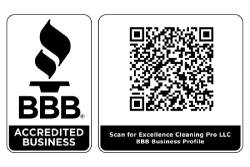Easy Guide to Remove Popcorn Ceiling and Understand Costs

Popcorn ceilings were popular in many homes built between the 1950s and the 1980s. They have a textured appearance that helps hide imperfections and reduce noise. This type of ceiling was often chosen because it was cheap and easy to apply. However, over the years, tastes have changed and popcorn ceilings are now considered outdated.
If you’re thinking about removing your popcorn ceiling you’re not alone. Many homeowners are opting for more modern smooth ceiling finishes. Removing popcorn ceilings can also increase your home’s value and make it easier to sell. However, this project can be more complex than it seems especially if your ceiling contains asbestos. In this guide, we’ll take you through the steps to remove popcorn ceilings safely, understand the costs and help you decide if it’s a DIY project or if you should hire a professional.
Understanding Popcorn Ceilings and Their Impact
What Is a Popcorn Ceiling?
Popcorn ceilings also known as acoustic or textured ceilings have a bumpy cottage cheese-like texture. It was sprayed or applied by hand to ceilings in homes for several decades. This texture became popular because it was easy to apply and helped absorb sound making it ideal for multi-story homes or apartment buildings.
Why Should You Consider Removing Popcorn Ceilings?
Though popcorn ceilings were common in the past there are several reasons to consider removing them today. Here are some of the top reasons:
- Outdated Appearance: Most people now prefer smooth flat ceilings. Popcorn ceilings can make a room feel old or out of style.
- Potential Asbestos Risk: Popcorn ceilings installed before 1980 may contain asbestos, a dangerous material that can cause lung disease if inhaled.
- Difficult to Clean: The textured surface traps dust and cobwebs making it hard to clean.
- Increased Home Value: Many homebuyers view popcorn ceilings as an eyesore. Removing them can improve your home’s marketability.
Pros and Cons of Popcorn Ceilings

Pros
While most homeowners are eager to remove popcorn ceilings it’s important to consider both sides. Here are some benefits:
- Soundproofing: Popcorn ceilings help reduce noise between floors which can be helpful in apartments or multi-level homes.
- Hiding Imperfections: They can cover up imperfections like cracks, water damage or uneven surfaces on ceilings.
- Low Cost: It was a cost-effective option during the time it was popular making it appealing to contractors and homeowners alike.
Cons
However, the disadvantages often outweigh the benefits, especially today:
- Outdated Look: Popcorn ceilings can make rooms feel dated and less appealing.
- Asbestos Hazard: Many popcorn ceilings installed before 1980 contain asbestos, a health risk that requires professional removal.
- Hard to Clean: The bumpy texture traps dirt and cobwebs making cleaning difficult.
- Reduces Property Value: Homes with popcorn ceilings may sell for less than those with modern ceiling finishes.
Pre-Removal Considerations and Safety Precautions
Before diving into the popcorn ceiling removal process it’s important to consider a few key factors.
Assessing Your Ceiling for Asbestos
The first step is to find out if your ceiling contains asbestos. Asbestos was often used in building materials before it was banned for residential use in the 1980s. To test for asbestos you’ll need to collect a sample of the ceiling material and send it to a lab. It’s crucial to wear protective gear and follow safety guidelines during sampling. Alternatively, you can hire a professional asbestos testing service to do this for you.
If the test shows that your popcorn ceiling contains asbestos you must hire a professional asbestos removal service. Removing asbestos yourself can be dangerous and is often illegal in some regions.
Cost Analysis
Removing popcorn ceilings is not a free or low-cost project. There are several costs to consider:
- Asbestos Testing: Professional asbestos testing typically costs between $200 and $400 depending on your location and the size of the area being tested.
- DIY vs. Professional Removal: If asbestos is not present you can save money by removing popcorn ceilings yourself. However, hiring a professional will ensure a quicker cleaner job. Professional removal costs between $1 and $3 per square foot depending on the complexity of the project.
Tools and Materials Needed for Safe Popcorn Ceiling Removal
If you decide to proceed with DIY removal you’ll need to gather some essential tools and materials to ensure a smooth process. Here’s what you’ll need:
- Protective Gear: Safety goggles gloves and a dust mask to protect yourself from falling debris.
- Plastic Sheeting: To cover floors, walls and furniture. Popcorn ceilings create a lot of mess during removal.
- Spray Bottle with Water: Moistening the ceiling makes it easier to scrape off the texture.
- Scraper: A wide putty knife or specialized popcorn ceiling scraper.
- Ladder: To reach the ceiling safely.
- Drywall Joint Compound: To repair any damage or smooth the ceiling after scraping.
Remove Popcorn Ceilings in 9 Easy Steps

Now that you’ve prepared and gathered your tools it’s time to get to work. Follow these nine easy steps to remove your popcorn ceiling:
1. Room Preparation and Safety Measures
Start by removing all furniture from the room or covering it with plastic sheeting. Also, cover the floors and walls to protect them from debris. Make sure to wear your protective gear before starting.
2. Turn Off the Power to the Room
For safety, turn off the power to any ceiling lights or fans. You don’t want to risk an electrical shock while working on the ceiling.
3. Moisten the Ceiling
Fill a spray bottle with warm water and lightly mist the ceiling. Let the water soak in for about 15 minutes. This will soften the texture and make it easier to remove.
4. Scraping the Ceiling
Use a wide scraper to gently scrape the popcorn texture from the ceiling. Be careful not to gouge the ceiling underneath. Scraping should be done in small sections applying more water if needed.
5. Dealing with Stubborn Areas
For areas where the texture doesn’t easily come off, reapply water and let it soak for a few more minutes. Be patient as forcing the texture off can damage the drywall.
6. Smoothing and Repairing the Ceiling
After removing all the popcorn you’ll likely notice some imperfections or holes in the ceiling. Use drywall joint compound to fill in any gaps, cracks or damage. Once dry, sand the surface smooth.
7. Priming and Painting the Ceiling
After smoothing the ceiling, apply a coat of primer. Once the primer is dry, paint the ceiling in your desired color to give it a fresh modern look.
8. Final Touches and Cleanup
Remove all the plastic sheeting and clean up the dust and debris. Make sure to inspect the entire room for any leftover texture or missed spots.
9. Inspection and Finishing Aesthetics
Once the paint is dry inspect the ceiling for any imperfections. You may need to do some touch-ups or additional smoothing. After the final inspection, you’ll have a smooth updated ceiling!
Alternatives to Removal
If you’re not ready to tackle removing popcorn ceilings there are a few alternatives that can give your ceiling a fresh look without the hassle of scraping.
Covering the Ceiling
Instead of removing the texture you can cover it up with new materials:
- Drywall: Adding a new layer of drywall over the popcorn ceiling is a simple solution. It creates a smooth surface without the need for messy removal.
- Ceiling Planks or Panels: Decorative planks or tiles can be installed over the popcorn texture to give the ceiling a stylish updated appearance.
Painting the Ceiling
If the popcorn texture is in good condition and doesn’t contain asbestos you can paint over it for a refreshed look. Use a thick roller designed for textured surfaces and apply multiple coats for even coverage.
Professional Help vs. DIY
When Should You Hire a Professional?
For small rooms or ceilings without asbestos removing the texture yourself is doable. However, there are situations where hiring a professional makes sense:
- Asbestos Presence: If your ceiling contains asbestos professional removal is a must.
- Large Areas: Removing popcorn ceilings in large areas or multiple rooms can be a time-consuming task and a professional can save you hours of work.
- Smooth Finish: If you want a perfectly smooth professional finish it’s often best to hire an expert who can repair and sand the ceiling properly.
Costs of Hiring a Professional
Professional popcorn ceiling removal costs can vary depending on the size of your home and whether asbestos is present. For standard removal expect to pay between $1 and $3 per square foot. If asbestos removal is required costs can range from $3 to $8 per square foot depending on the complexity of the project.
Cost-Benefit Analysis
Removing popcorn ceilings can be expensive but the benefits often outweigh the costs. Here’s why:
- Increased Home Value: Many buyers are turned off by popcorn ceilings. By removing them you can make your home more attractive to buyers and potentially increase its value.
- Better Aesthetic Appeal: Modern smooth ceilings look cleaner and more up-to-date improving the overall look of your home’s interior.
- Health and Safety: If asbestos is present removing popcorn ceilings can eliminate a potential health hazard from your home.
FAQs
1. What is a popcorn ceiling?
Popcorn ceilings are bumpy textured ceilings that were popular from the 1950s to the 1980s. It is also called an acoustic or textured ceiling.
2. Why should I remove my popcorn ceilings?
Popcorn ceilings are outdated, hard to clean and may contain asbestos. Removing them can make your home look modern and increase its value.
3. Can I remove popcorn ceilings myself?
Of Course, you can remove it yourself if it doesn’t contain asbestos. It’s a messy job but doable with the right tools and preparation.






